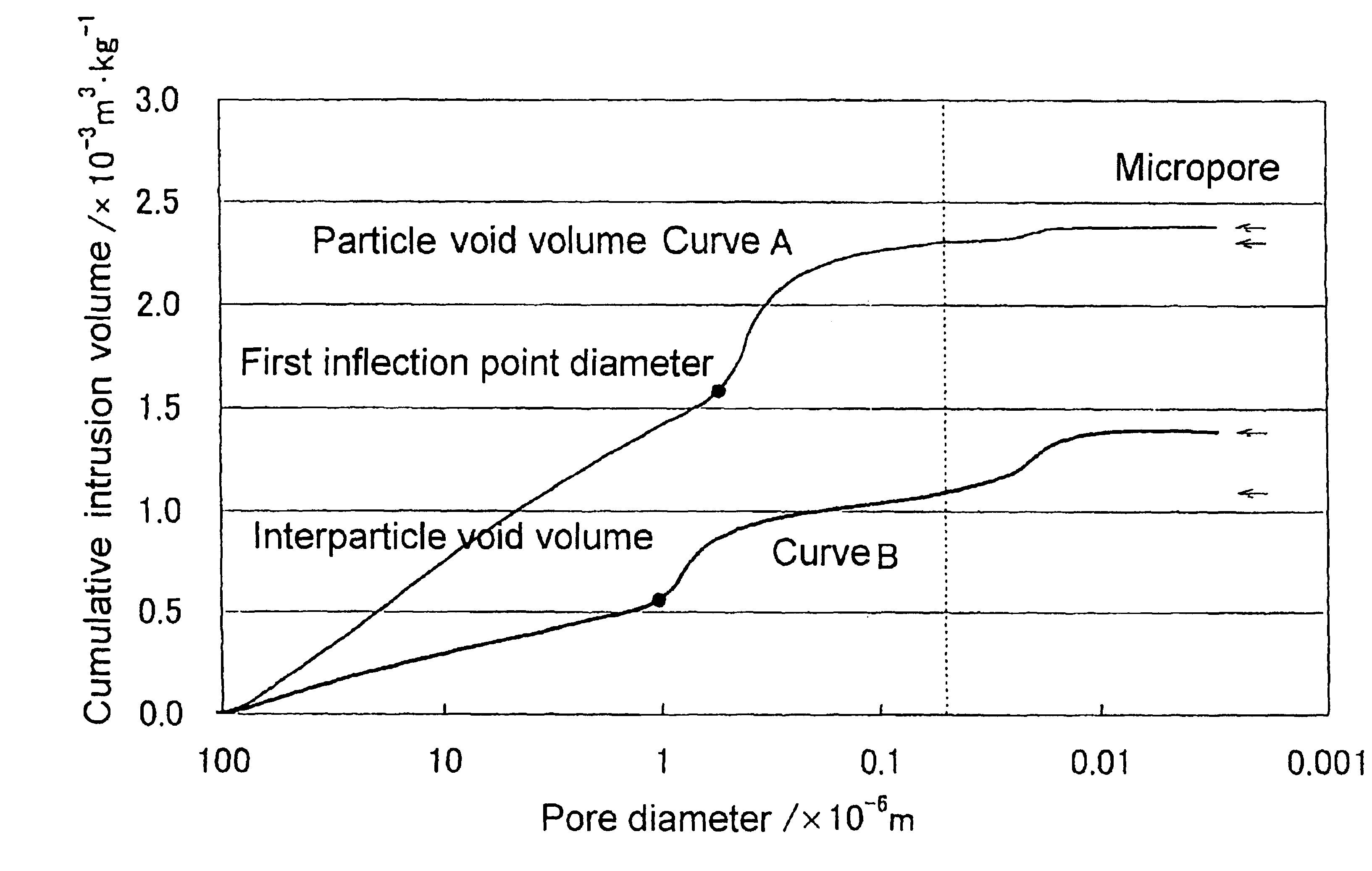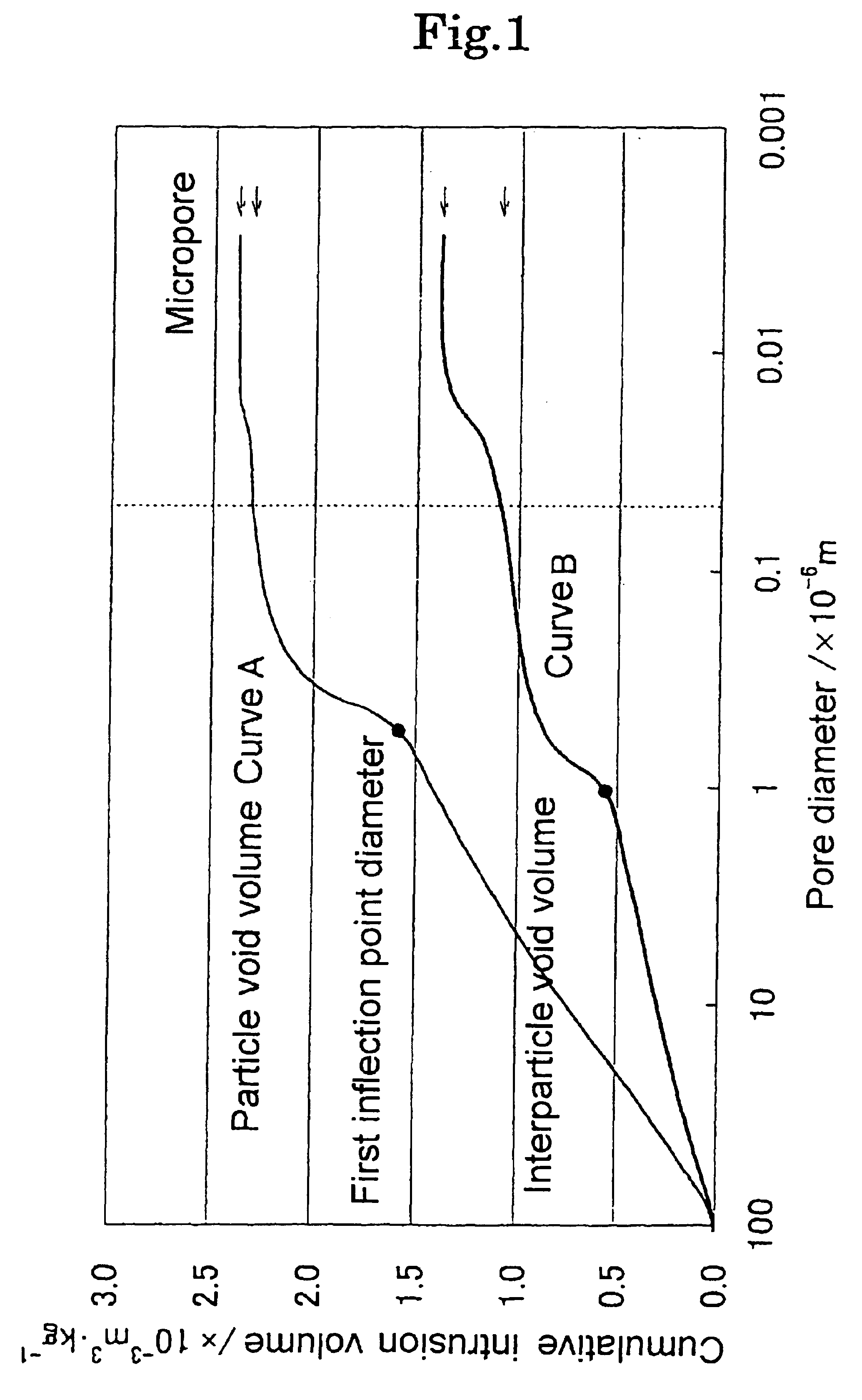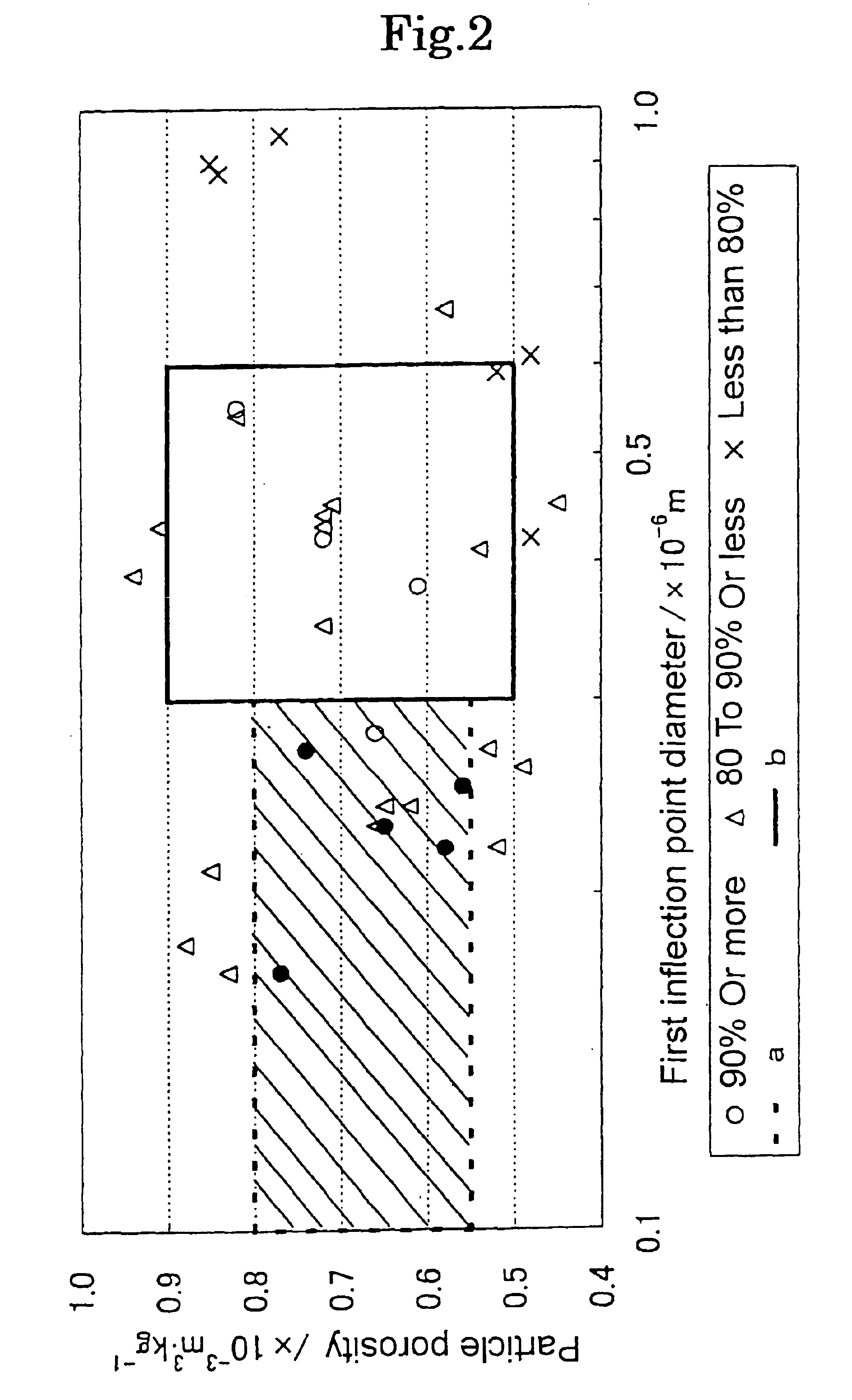Magnesium oxide particle aggregate
a technology of magnesium oxide and aggregate, applied in the field of magnesium oxide particle aggregate, can solve the problems of difficulty in applying methods, and inability to appropriately evaluate the forsterite formation reaction
- Summary
- Abstract
- Description
- Claims
- Application Information
AI Technical Summary
Benefits of technology
Problems solved by technology
Method used
Image
Examples
example 1
[0058]A calcium hydroxide slurry was added to a magnesium chloride solution having a concentration of 2.0 mol·kg−1 so that the magnesium hydroxide concentration after reaction became 1.2 mol·kg−1, and the resultant mixture was subjected to reaction in an autoclave at 150° C. for 3 hours to prepare magnesium hydroxide having a BET specific surface area of 8.2×103 m2·kg−1. The magnesium hydroxide prepared was calcined using a rotary kiln individually at temperatures of 800° C., 950° C., and 1,050° C. for one hour, and then ground by means of an impact grinder to produce three types of magnesium oxide particle aggregates having different calcination degrees. Then, the three types of magnesium oxide particle aggregates produced were mixed together in a mixing ratio of 30:40:30 to obtain a magnesium oxide particle aggregate having a particle aggregation form which falls in the range defined in the present invention.
example 2
[0059]Magnesite was calcined using a rotary kiln at 1,100° C. for one hour to prepare magnesium oxide having a BET specific surface area of 5.2×103 m2·kg−1. The magnesium oxide prepared was added to water so that the slurry concentration became 2 mol·kg−1 to effect a reaction at 90° C. for 2 hours, preparing magnesium hydroxide having a BET specific surface area of 7.5×103 m2·kg−1. Then, the magnesium hydroxide prepared was calcined using a rotary kiln at 980° C. individually for 0.2 hour, 0.5 hour, 0.8 hour, and 2 hours, and then ground by means of an impact grinder to produce magnesium oxide particle aggregates having different calcination degrees. Then, the four types of magnesium oxide particle aggregates produced were mixed together in a mixing ratio of 25:30:15:30 to obtain a magnesium oxide particle aggregate in Example 2 having a particle aggregation form which falls in the range defined in the present invention.
example 3
[0060]A slaked lime slurry was added to bittern so that the magnesium hydroxide concentration after reaction became 1.2 mol·kg−1, and the resultant mixture was stirred at 600 rpm to effect a reaction at 80° C. for 2 hours. Then, the reaction mixture was subjected to filtration by means of a filter press, and washed with water and dried, and the resultant magnesium hydroxide was calcined using a rotary kiln at 900° C. for one hour to prepare magnesium oxide having a BET specific surface area of 20.6×103 m2·kg−1. The magnesium oxide prepared was added to water so that the slurry concentration became 3 mol·kg−1, and then calcium chloride was added thereto in an amount of 2 mol %, based on the mole of the magnesium oxide, and the resultant mixture was subjected to reaction at 80° C. for 2 hours to prepare magnesium hydroxide having a BET specific surface area of 11.0×103 m2·kg−1. Next, the magnesium hydroxide was calcined using a muffle furnace at a furnace temperature of 1,200° C. indi...
PUM
| Property | Measurement | Unit |
|---|---|---|
| Angle | aaaaa | aaaaa |
| Angle | aaaaa | aaaaa |
| Angle | aaaaa | aaaaa |
Abstract
Description
Claims
Application Information
 Login to View More
Login to View More - R&D
- Intellectual Property
- Life Sciences
- Materials
- Tech Scout
- Unparalleled Data Quality
- Higher Quality Content
- 60% Fewer Hallucinations
Browse by: Latest US Patents, China's latest patents, Technical Efficacy Thesaurus, Application Domain, Technology Topic, Popular Technical Reports.
© 2025 PatSnap. All rights reserved.Legal|Privacy policy|Modern Slavery Act Transparency Statement|Sitemap|About US| Contact US: help@patsnap.com



